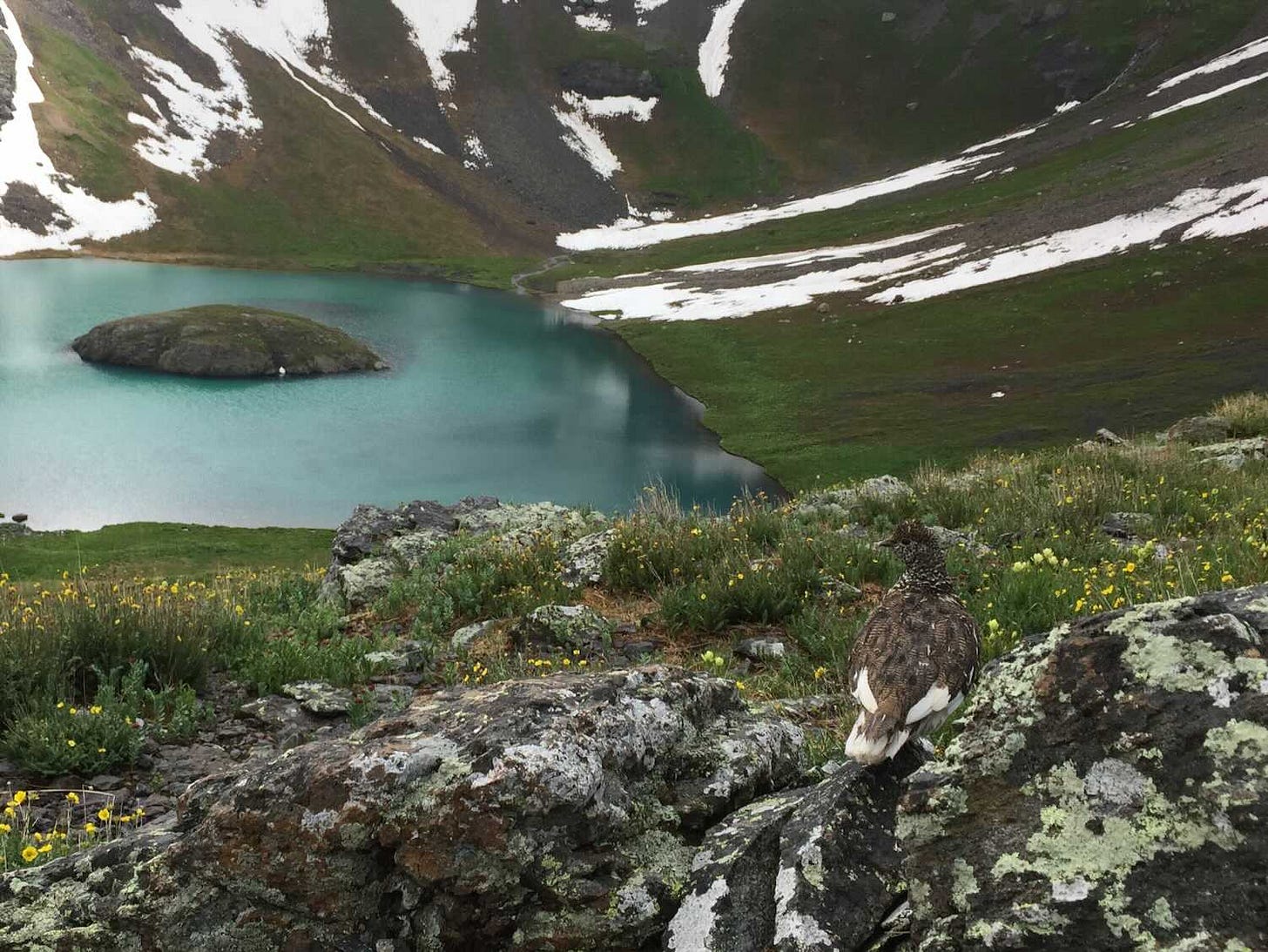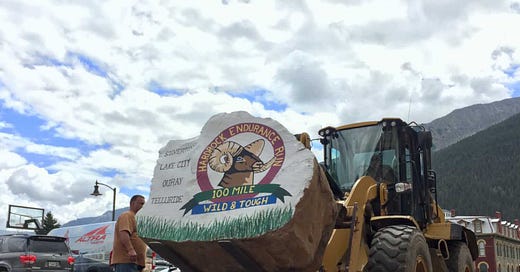Saturday is Lottery Day
Some of you know — you already feel a lump in your throat and a fluttering in your belly when you think about it.
You’ll be right there with me, either watching the drawings as they happen, or you’ll be checking in after that run you’re doing to divert yourself from the exquisite slow torture of watching.
For the rest of you, here’s the story…
On Saturday (and on the first Saturday in December every year), two of our premiere hundred-mile trail races — the Western States Endurance Run and the Hardrock Hundred Endurance Run — draw names to determine who gets to participate next year.
The odds are long.
For Hardrock, there are 1,683 applicants for the 49 spots open to those who’ve never finished the race.
For Western States, there are 6,208 applicants for about 250 spots.
Each lottery has idiosyncrasies, but they both reward long-term persistence. Each year that you qualify (by completing a race from a respective list of qualifiers) and enter, but aren’t selected, your ticket count for the next lottery goes up exponentially (2^(n-1), so 2 tickets in the second year, 4 in the third year, then 8, 16, 32…).
There’s no extra credit for additional qualifiers, or for running them faster — you qualify for the year, then you do it again next year, then again and again.
Eventually, inevitably, the odds will be in your favor.
As it is in ultrarunning (and in life), so it is with these lotteries — persistent forward motion is the key to success.
Lottery Day sets the course for the new year
For about 8,000 of us, Saturday’s results determine the course of our running life in 2022.
If your name is drawn, you’re headed to California in June for Western States, or to Colorado in July for Hardrock (or — it could happen — you’re going to both races, 3 weeks apart). Suddenly, the first half of 2022 has laser-focus: after all these years, you are finally in (and you’d better be ready).
If your name doesn’t come up, your running situation for 2022 is clarified by what you’re not doing. Now you can go shopping for other races. Now you can make other plans.
To say it’s like waiting to see what Santa brought on Christmas morning is no exaggeration. We’re older now, so we try to play it down, but the truth, at least for me, is that it feels exactly like that.
Why these races?
There are nearly 300 hundred-mile races in the U.S. They offer an extravagant buffet of options, diverse races with deep history and distinctive culture, world-class endurance challenges in the most beautiful landscapes on Earth. And most of them are accessible without luck or a lottery.
So why would we fixate on these two?
There’s no definitive answer, but part of it is a simple fact of human nature — if something is hard to get, we want to get it. And with a limited supply (the number of participants is limited by public land permits) and constantly growing demand, these races are harder and harder to get. They create their own gravity — the more people try to get in, the more people there are who want in.
Beyond that, though, we each have our own reasons. Here are (some of) mine (I come by them honestly).
Western States
Western States is the first hundred-miler I ever heard of.
I learned about it in 2005, when I read Ultramarathon Man: Confessions of an All-Night Runner, by Dean Karnazes. At the time I’d completed seven marathons, and thought I was at the edge of my capabilities. I was still trying to get faster, but the idea of going further wasn’t even there for me. And I didn’t know about ultras.
Dean was in a similar place, feeling accomplished, but no longer inspired by the marathon distance, and not knowing there were longer races. Then he encountered some guys training for Western States and got sucked into the idea of running it. The next third of the book details his first experience there.
He made it sound really, really hard.
That book planted a seed, this idea that it was possible to run farther than 26 miles. It took 6 years for it to germinate, and then I only added 5 miles or so, a 50k. But that was enough to break the barrier and change my concept of limits. Four years later, I ran my first hundred (Eastern States, 2015), and I’ve run one per year ever since.
So Western States has a privileged position in my mind because it’s the first one I knew about.
But it’s also the first modern hundred-mile footrace anyone knows about, with a legendary and beautifully symbolic beginning as a horse race that people started running without the horse back in 1974.
As the oldest and most famous hundred, it fills the same role for the ultrarunning community that the Boston Marathon fills for sub-ultra road runners. It’s the de facto championship of our sport, a Super Bowl and a celebration of our tribe. For me, it feels like something I need to be part of at least once.
And there was that movie… Unbreakable is the story of an epic battle at the 2010 Western States — dramatic, with lots of trail footage (and it’s the first time most of us met a young Kilian Jornet).
I’m a sucker for this sort of thing, and we watched it in 2013, just as I was crossing the threshold from short ultras to long ones. It’s one of the things that pushed me over that edge.
I entered my first Western States lottery in 2015, and I’ve been waiting/trying/hoping to get in ever since. This year I have 32 tickets in the bin.
Hardrock
Hardrock is a completely different animal than Western States.
First, its near (or at) the top of most of the “hardest race in the world” lists, and what self-respecting ultrarunner doesn’t want to do The Hardest Thing?
It may or may not be the hardest (they’re all hard in their own ways), but by any measure it’s an objectively difficult race. It has about twice as much climbing (over 33,000 feet of ascent) as Western States. The highest point on the Hardrock course is more than 14,000 feet above sea level, it goes above 13,000 feet many times, and only rarely dips below 10,000 feet.
It’s hard without contrivance — no gratuitous extra climbs, no repeats, just one big circle that follows the natural flow of the landscape through the San Juan Mountains… it’s hard to imagine a grander or more natural setting for a race.
That idea of natural flow without contrivance describes the entire atmosphere of Hardrock. It is intense, yes, but in a low key, old-school way that is quieter than the sprawling spectacle of Western States. It’s still a spectacle, but it’s an intimate one.
There are only about 150 runners, and they’ve met tough qualification standards (there are no hundred-mile rookies at Hardrock). And the race nurtures and protects a strong feeling of family in everything they do (including a lottery structure that favors familiarity — over half the entries are reserved for prior finishers).
The first mention of Hardrock in my journal is from July 2014, when I was following the progress of a friend who was pacing another runner around the course. He’d been there before, and there was something in the way he talked about it, some mix of excitement and reverence in his voice that elevated the race in my mind.
That sense was amplified by a short and powerful documentary called Kissing the Rock that I watched in the spring of 2016.
Soon after, I pulled out of the hundred-miler I’d entered earlier, and chose instead one from the list of Hardrock qualifiers (a monster of a race in Arizona called Mogollon Monster, that also gave me enough points to enter the UTMB lottery).
I entered my first Hardrock lottery after that race in 2016, and I’ve been waiting/trying/hoping to get in ever since. This year I have 8 tickets in the bin. (Hardrock was cancelled in 2019 because of the late snow melt in the high country, and in 2020 because of the pandemic — that’s why my ticket count is so low.)
So that’s it…
…that’s what my weekend hoopla is about. It’s a small thing really, and neither of these races will make or break my running career. In many ways it will be a relief to come up empty (yet again) this weekend.
But relief isn’t what we’re after, is it? And I do want to run these races.
There’s nothing to do but wait. (Good luck, everyone!)







Nice write up on the race and it’s lottery.
I really enjoyed the history of Hard Rock and scenery in the short documentary, “Kissing the Rock” you shared. I’m looking forward to watching “Unbreakable” when I have a bit more time and want to cozy up to a good running story. As the winter weather sets in I’ll have plenty of time for that.
I can see why after viewing “Kissing the Rock”, you were inspired to get busy on collecting your lottery tickets.
Run On.
Good luck! My first 5K is still in the future, but I really enjoy reading about your experiences with ultras. I *doubt* an ultra is in my future, but I never thought I'd start running at all, so you never know.